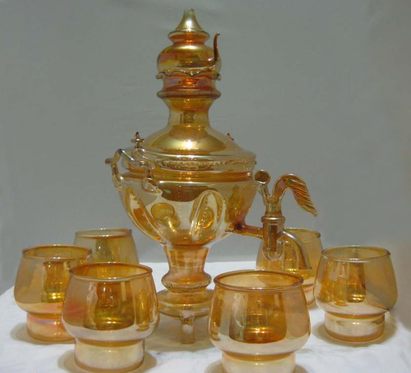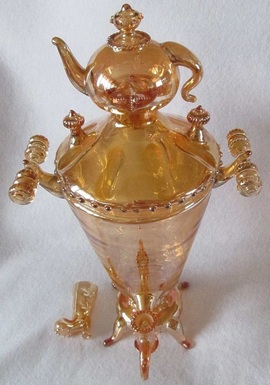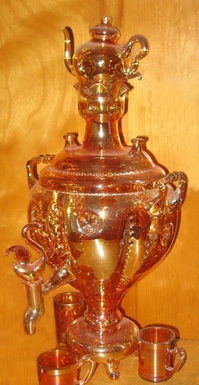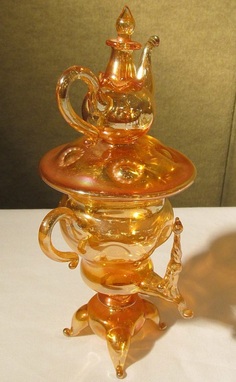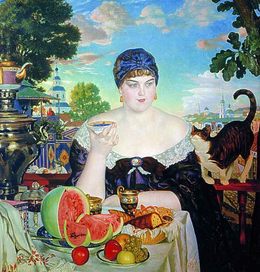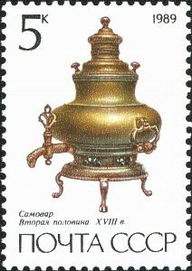Collectors Facts - Samovars from Russia (maker not known)
|
Shapes:
Various
|
Colours:
Marigold only known
|
Carnival Glass Samovars – exotic and fabulous – were made in Russia from around the 1950s. Essentially decorative items, not meant for use, they are not easy to find and are eagerly sought after by those wanting something quixotic and rather romantic.
The Carnival Glass ones are often very intricate and include detailed accessories as well as the main body of the urn. All the iridised examples we have seen have been marigold. We have seen a variety of different forms and curious details on some truly splendid examples of this genre. Five Carnival Glass samovars are shown on this page - they look similar, but they are all different!
The Carnival Glass ones are often very intricate and include detailed accessories as well as the main body of the urn. All the iridised examples we have seen have been marigold. We have seen a variety of different forms and curious details on some truly splendid examples of this genre. Five Carnival Glass samovars are shown on this page - they look similar, but they are all different!
|
This Samovar has a teapot top, a lower finial (not shown in the picture), and "boot" glasses. The tiny "boots" have a horseshoe shaped heel. Courtesy of Carl and Eunice Booker
|
Yet another style. This one has a teapot
top, a swan-type tap and a set of little mugs to go with it. Courtesy of Carl and Eunice Booker |
This Samovar is only two pieces. The lid on the teapot on the top of the Samovar comes off.
The rest is just one piece. Courtesy of Carl and Eunice Booker |
|
What are samovars? A samovar is (traditionally) a form of metal urn used to heat and boil water, typically found in Russia and other central and eastern European countries, as well as the Middle East. The samovar was an important and integral part of the typical Russian household, and are illustrated in many aspects of Russian life, as shown here. Right: The Merchants Wife by Boris Kustodiev, 1918. Courtesy Wikimedia Commons. Currently at the Russian State Museum. Far Right: Samovar stamp. Baroque samovar, 18thcentury. Courtesy Wikimedia Commons (personal collection, scanned and processed by Mariluna). See more Collectors Facts |
